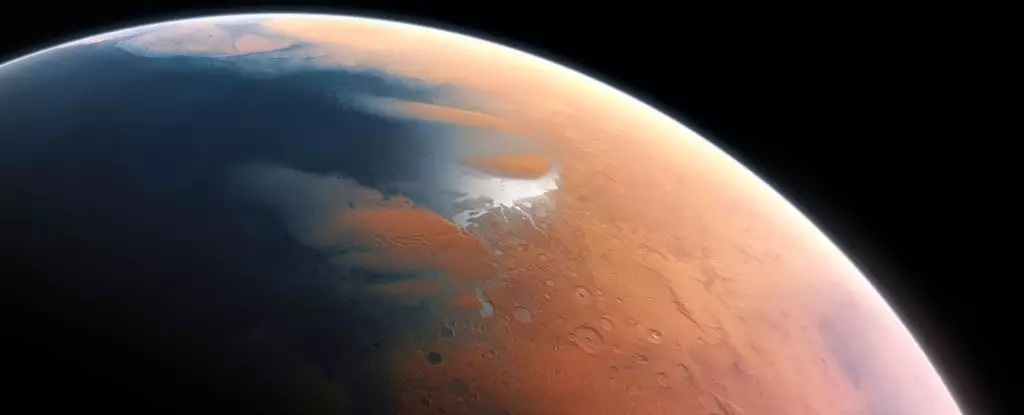Mars, the fourth planet from the sun, has always intrigued scientists and space enthusiasts alike. Historically perceived as a dry world, recent research has turned this assumption on its head, revealing Mars once hosted significant bodies of water. This article dissects recent findings concerning the Martian environment, particularly the implications of the underground features discovered that point towards the existence of ancient oceans.
The notion that Mars was once covered in vast oceans is no longer just speculative. Ground-breaking observations using advanced technologies like ground-penetrating radar have provided solid maritime evidence buried beneath its dusty surface. Researchers from Penn State, including geologist Benjamin Cardenas, have discovered formations resembling ancient beaches and river deltas, hinting at a wet and vibrant Martian past. The new findings strongly suggest the presence of a northern sea, aptly named Deuteronilus, existing around 4 billion years ago.
Mars today presents a stark contrast to this vision of an oceanic past. From a distance, the planet appears barren and arid, with its notable global dust storms and desolate landscapes. The research reveals that previously, Mars wasn’t merely a desiccated rock but rather a dynamic environment with flowing water and potentially habitable conditions. Hence, the excitement surrounding the phrase “follow the water” in Mars exploration is justified as these past environments could hold clues about the potential for life.
Utilizing data gathered from the Zhurong Mars rover operated by the Chinese National Space Administration, a collaborative team of American and Chinese scientists has utilized ground-penetrating radar (GPR) to investigate beneath the surface. By sending radio waves into the Martian soil and interpreting the reflected signals, they generated a three-dimensional map displaying the structures lying underground. This technology allows researchers to probe up to 80 meters deep, revealing significant geological formations.
The latest findings indicate that the configurations of these buried layers correspond to ancient shorelines seen on Earth. According to geophysicist Michael Manga, the slopes and orientations of the discovered structures align with what would be expected from a substantial, liquid sea. These observations carry profound implications: they suggest a lengthy presence of an ocean, fed by rivers and characterized by sand accumulation, which is consistent with beach formation on Earth.
The presence of large water bodies in Mars’ past affects not only planetary geology but also its climate and habitability. Oceans are phenomenal agents in shaping terrestrial features and significantly influence climate dynamics. The insights gained from the investigation of ancient Martian shorelines enrich our understanding of how those early aquatic environments may have interacted with the Martian atmosphere.
Moreover, the existence of coastlines potentially points to regions where life could have initiated. Observers like Manga highlight the importance of coastal regions as potential breeding grounds for life as we know it, drawing parallels to early Earth conditions. This newfound perspective grants researchers valuable information regarding potential habitats that may host evidence of past extraterrestrial life.
Despite the exciting revelations, many questions remain. What precisely happened to the water that once graced Mars? How did the planet transition from a wet to an arid landscape? Recent theories propose that a significant portion of Mars’ water may now be trapped beneath its surface in vast, unreachable reservoirs. This continued exploration could shed light on the fate of these ancient oceans and the climatic evolution of Mars.
Neither can one overlook the role of tidal forces in shaping the Martian coastlines. While the absence of a moon differs Mars from Earth, its closest star, the Sun, would have exerted considerable gravitational influence. Future studies might delve into how Martian tides contributed to the landscape, aiding our understanding of the planet’s geological development during its watery epoch.
The evidence for ancient oceans on Mars represents a pivotal advancement in planetary science. As exploration continues, researchers are eager to further explore these findings, delineating not only Mars’ past but also uncovering its potential for life. Understanding how Mars transitioned from a wet world to the sterile landscape we see today is crucial in piecing together the historical narrative of our neighboring planet and might steer future explorations and technologies devoted to searching for life beyond Earth.


Leave a Reply